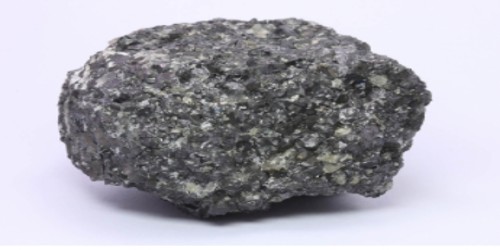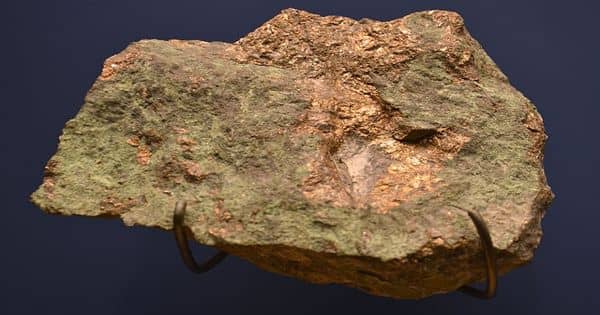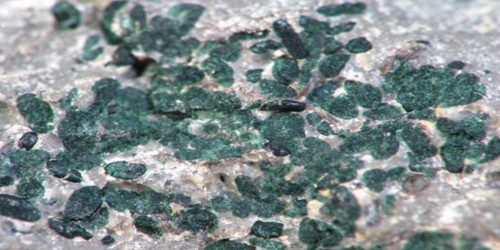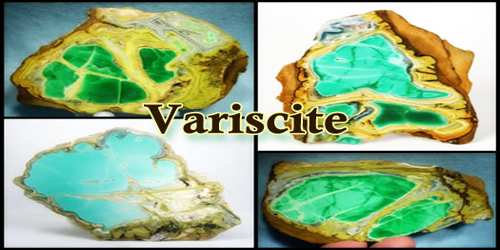Ilmenite is the titanium-iron oxide mineral with the idealized formula FeTiO3. It is a common accessory mineral in igneous rocks, sediments, and sedimentary rocks in many parts of the world. It is a weakly magnetic black or steel-gray solid. From the commercial perspective, ilmenite is the most important ore of titanium. It is now the most important ore of titanium. It is the main source of titanium dioxide, which is used in paints, fabrics, plastics, paper, sunscreen, food and cosmetics.
General Information
- Category: Oxide mineral
- Formula: iron titanium oxide, FeTiO3
- Crystal system: Trigonal
- Crystal class: Rhombohedral (3)
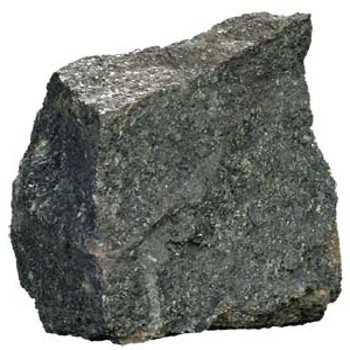
Fig: Ilmenite or Manaccanite
Properties
Ilmenite is commonly recognized in altered igneous rocks by the presence of a white alteration product, the pseudo-mineral leucoxene. Often ilmenites are rimmed with leucoxene, which allows ilmenite to be distinguished from magnetite and other iron-titanium oxides. The example shown in the image at right is typical of leucoxene-rimmed ilmenite.
In the reflected light it may be distinguished from magnetite by more pronounced reflection pleochroism and a brown-pink tinge.
- Color: Iron-black; gray with a brownish tint in reflected light
- Crystal habit: Granular to massive and lamellar exsolutions in hematite or magnetite
- Fracture: Conchoidal to subconchoidal
- Tenacity: Brittle
- Mohs scale hardness: 5–6
- Luster Metallic to submetallic
- Streak: Black
- Diaphaneity: Opaque
- Specific gravity: 4.70–4.79
- Optical properties:: Uniaxial (–)
Discovery
In 1791 William Gregor discovered ilmenite, in a stream that runs through the valley just south of the village of Manaccan (Cornwall), and identified for the first time Titanium as one of the constituents of ilmenite.
Most ilmenite forms during the slow cooling of magma chambers and are concentrated through the process of magmatic segregation. A large underground magma chamber can take centuries to cool. As it cools, crystals of ilmenite will begin forming at a specific temperature. These crystals are heavier than the surrounding melt and sink to the bottom of the magma chamber.
Information Source:
